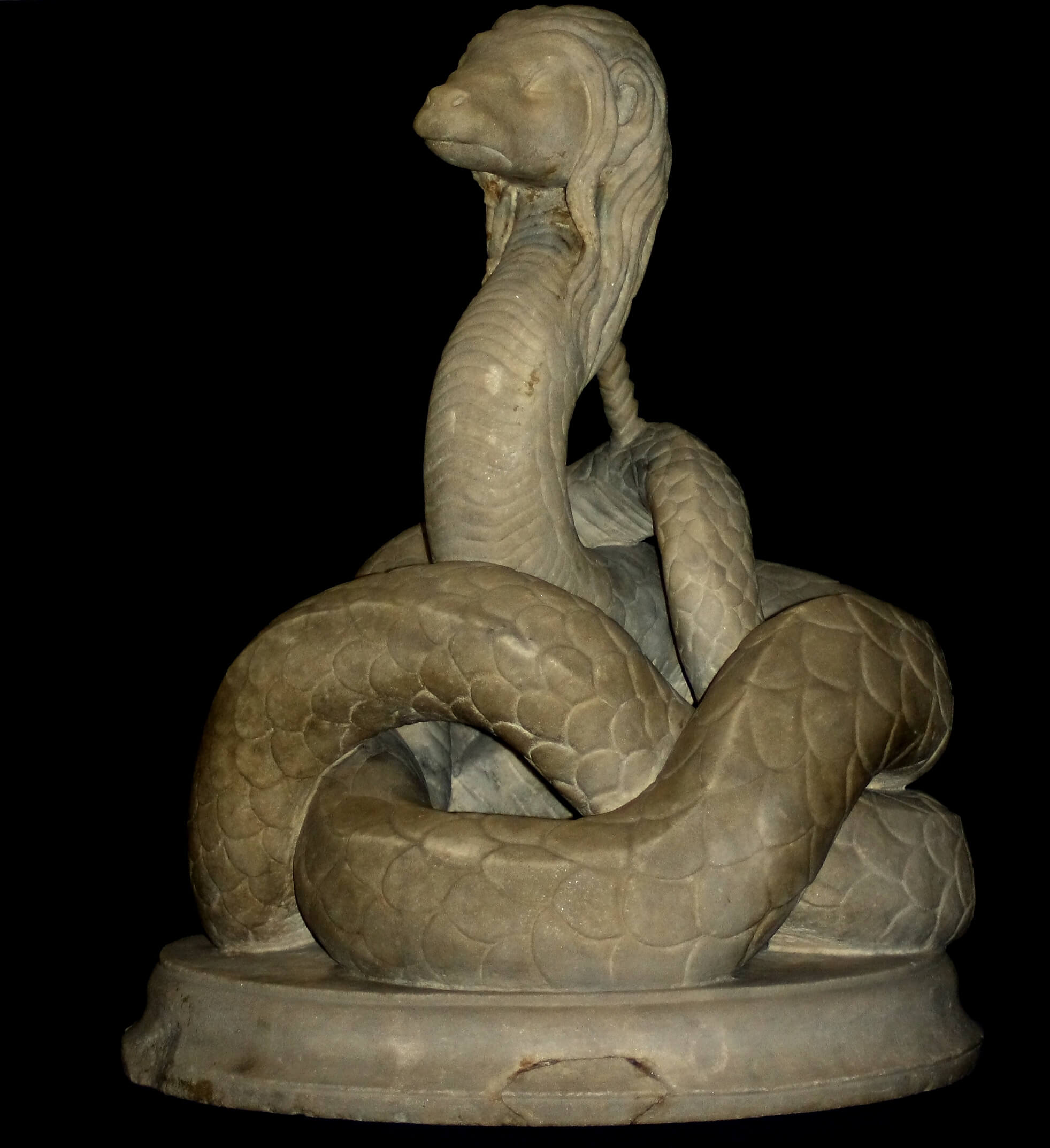By Samuel Oer de Almeida,
a Classical archaeologist from Germany
In the 2nd century CE, oracles already have had a century-long tradition in the Graeco-Roman world. Individuals as well as legates from whole communities frequented oracular places requesting—in exchange for bare coin—a wise response from the god himself or his mediator concerning pressing issues, such as political struggles, epidemics, famines, or personal matters. The oracle’s answer was usually transmitted in archaic verse and not seldom in an enigmatic manner. However, most oracular replies were vague predictions of the future or instructions unsurprisingly related to pious religious conduct.
Ancient Asia Minor, which roughly conforms to modern-day Turkey, featured many influential oracles. During the Roman imperial times, Asia Minor saw the heyday of oracular sites in the 2nd and 3rd centuries CE; the sanctuaries of Apollo in Didyma (Didim) and Claros (near Değirmendere) on the Aegean coast were only the most popular ones. Many other oracles, ranging from widely known and venerable to local and more mundane ones, existed—certainly more than our fragmentary evidence often suggests.
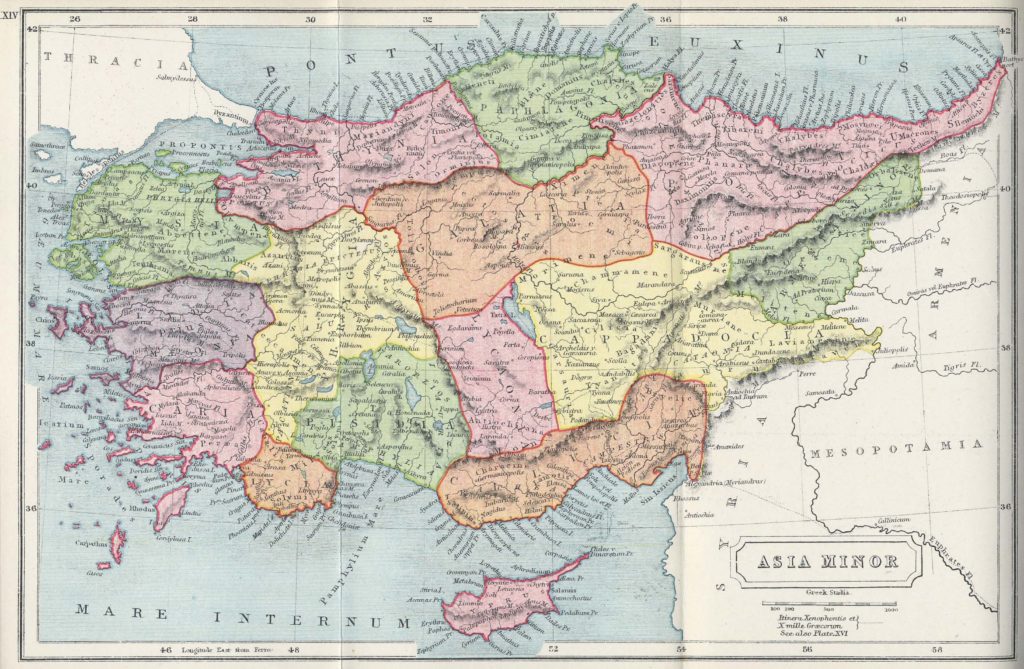
We are exceptionally well informed about the genesis and functioning of an oracle in the small town of Abonoteichos (İnebolu) in Paphlagonia on the coast of the Black Sea, which gained considerable popularity in the middle of the 2nd century CE. The Syrian satirist Lucian of Samosata, famous for his mocking tongue-in-cheek style, wrote a polemical pamphlet (Alexander or the False Prophet) about the oracle’s founder and high priest, Alexander of Abonoteichos.
According to Lucian, the Paphlagonian Alexander was inspired by snakes held as pets in Macedonia. He manufactured metal tablets which he buried at the oracular site of Apollo Pythios in Chalcedon (Istanbul’s Kadıköy district). Upon the intended find of the tablets, which proclaimed that Apollo and his son Asclepius would set out and settle down in Abonoteichos, the town’s citizens immediately began to build a temple for their veneration. In his hometown, Alexander elaborately staged the birth of a speaking snake whose name was Glycon and claimed to be a son of Apollo and a reincarnation of Asclepius (Neos Asklepios).
The oracle took place in a dim cult room; Alexander used a tamed snake which he positioned around himself. While concealing the snake’s real head, he moved the mouth and tongue of an anthropomorphic one made of linen. Due to the dim light in the room, the received querent was unable to see through the well-orchestrated illusion and believed the longhaired snake itself was talking to him. Later, Alexander also accepted written questions: he then recorded the alleged answer by Glycon in writing on a specific day and handed it back to the enquirer.
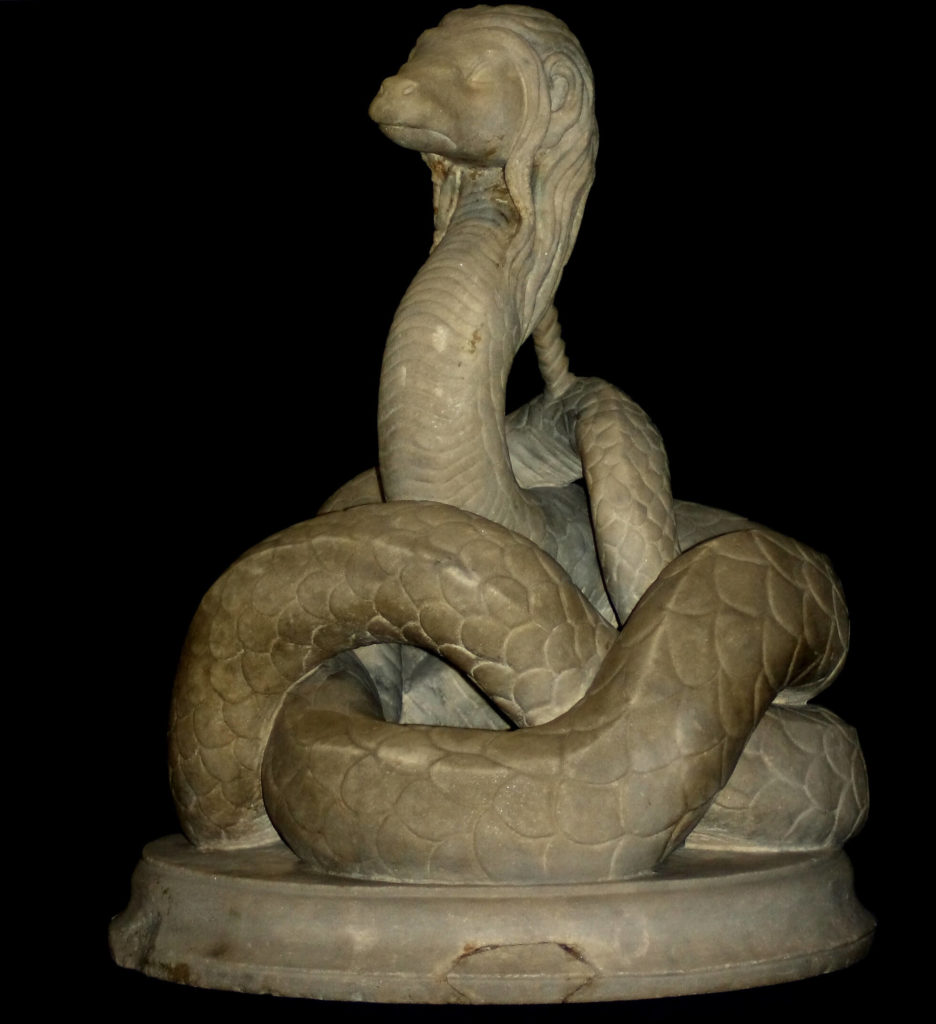
Marble Statue of Glycon (2nd century CE).
(© CristianChirita / Wikimedia Commons / CC BY-SA 3.0)
Over the course of the following years, the oracle became widely known; Alexander had wisely chosen an area which has not yet had a dominant oracular site. Thus, the Neos Asklepios was not exposed to serious religious competition. Soon, the oracle was not just regularly frequented by inhabitants of Asia Minor and its border regions: its popularity reached up to influential senatorial circles in Rome. An eminently enthusiastic senator, Publius Mummius Sisenna Rutilianus, who also acted as the governor of the Roman province of Asia, eventually married Alexander’s young daughter at the age of 60—securing the oracle powerful connections with the Roman elite. Even the contemporary Roman emperor, Marcus Aurelius, should have visited the oracle once in the context of a military campaign.
Lucian’s accusatory account is, of course, not to be taken word by word, but his sarcastic attacks still reveal social processes underlying the functioning of ancient oracles. While Lucian is hostile—or at least very sceptical—towards this religious practice cultivated by hundreds of believers, the oracle of Glycon in Abonoteichos nevertheless satisfied spiritual
needs of people in trouble and had an, apparently even positive, impact on the life of its numerous visitors. Despite the satirist’s agitation, the oracle hence enjoyed lasting popularity through the 2nd and 3rd centuries CE, even long after the passing of its founding prophet.
The oracle’s renown is documented on bronze coins issued by not a few cities of mainly northern Asia Minor and its western border regions in imperial times. The images minted on ancient civic coins are a prime source of the cultural identity of a city’s inhabitants—coins were an official medium which propagated the individual community’s self-conception to its own citizens as well as everybody else using their money. Thus, the depiction of Glycon on civic coins bears witness to the extraordinary influence and importance of the oracle for the cultural identity of the minting cities’ inhabitants. Expectedly, the city of Abonoteichos itself began to depict the speaking snake on its coinage during the oracle’s early years.
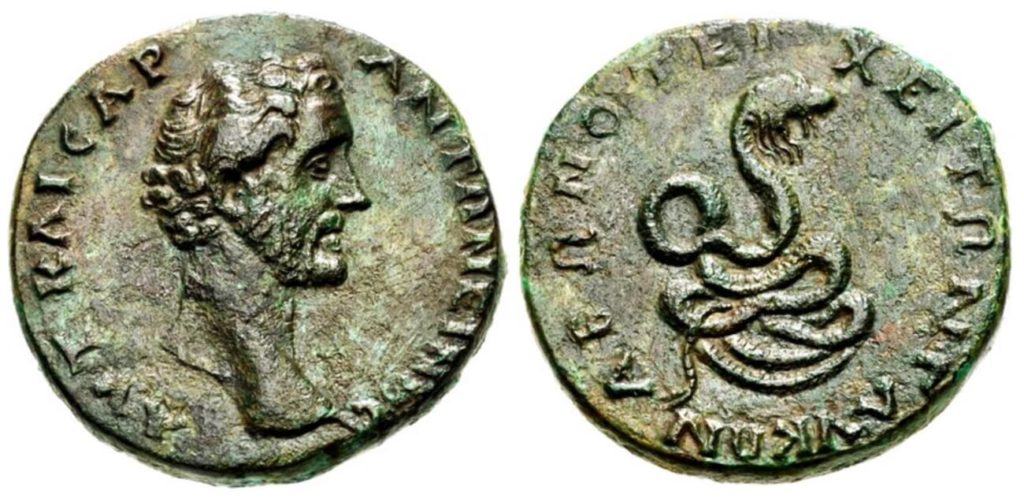
(© Classical Numismatic Group, Inc. / Wikimedia Commons / CC BY-SA 3.0)
More remarkably, also cities far away from Abonoteichos decided that a depiction of Glycon was appropriate to represent their community. The coin shown below was minted in Marcianopolis (Devnya) in Moesia Inferior, which lies in modern-day Bulgaria. On the one hand, the coin shows the widespread influence of the new Asclepius. On the other hand, it testifies to the longevity and lasting popularity of the oracle, since the coin has been minted in the middle of the 3rd century CE.
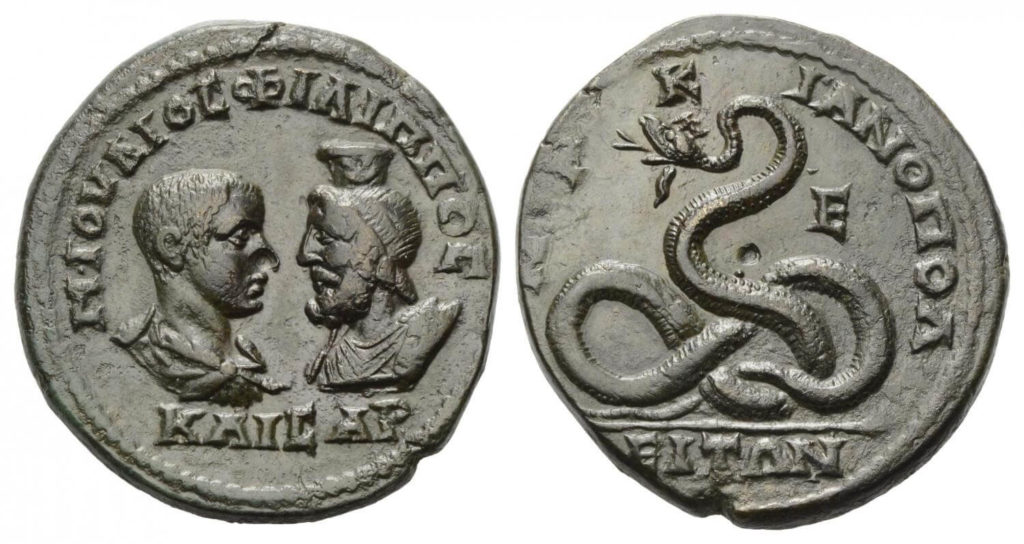
(© Otto Nickl / Wikimedia Commons / CC BY-SA 4.0)
Another piece of material evidence, also coming from the Danubian province Moesia Inferior, is the already shown marble statue of Glycon in the Museum of National History and Archaeology in Constanța, which was found in ancient Tomis and lets one conjecture a public cult of Glycon in the city. However, the well-preserved sculpture enjoyed such popularity in modern Romania that it was deemed worthy to adorn the national 10,000 lei banknote in 1994. In a way, the iconographic choice made for the modern banknote continued or, more precisely, revived the use of Glycon’s image on monetary media—although Romanians are unlikely to pay the oracle of Abonoteichos a visit nowadays.
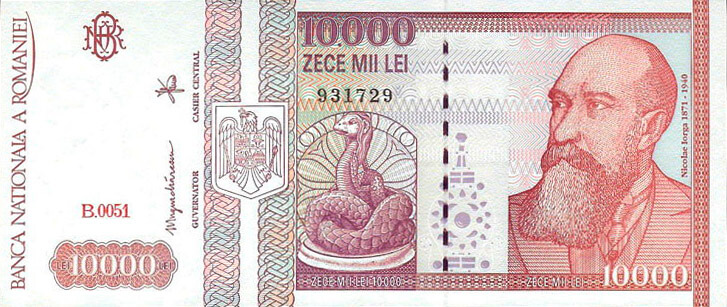
The lasting success of Alexander’s oracle of Glycon and Lucian’s dissident voice show that already in antiquity there were varying opinions on religious practices. Religion was and always will be subject of discussion. Most notably, however, is that divergent points of view could exist alongside each other. In a way, a culture of pluralism of opinions allowed the coexistence of different attitudes towards religion—vital for this was and is the possibility of free expression.
Further Reading
Chaniotis, A. 2002: ‘Old Wine in a New Skin: Tradition and Innovation in the Cult Foundation of Alexander of Abonouteichos’, in E. Dąbrowa (ed), Tradition and Innovation in the Ancient World, Electrum 6, Kraków, 67–85.
Elm von der Osten, D. 2006: ‘Die Inszenierung des Betruges und seiner Entlarvung: Divination und ihre Kritiker in Lukians Schrift ‹Alexander oder der Lügenprophet›’, in D. Elm von der Osten, J. Rüpke, and K. Waldner (eds), Texte als Medium und Reflexion von Religion im römischen Reich, Potsdamer Altertumswissenschaftliche Beiträge 14, Stuttgart, 141–157.
Friese, W. 2015: ‘Trick or Treat? Secrecy and Performative Space in the Sanctuary of Glycon Neos Asclepius’, in E. Mortensen and S. G. Saxkjær (eds), Revealing and Concealing in Antiquity. Textual and Archaeological Approaches to Secrecy, Aarhus Studies in Mediterranean Antiquity 13, Aarhus, 147–160.
Jones, C. P. 1986: Culture and Society in Lucian, Cambridge, MA.
Miron, A. V. B. 1996: ‘Alexander von Abonuteichos. Zur Geschichte des Orakels des Neos Asklepios Glykon’, in W. Leschhorn, A. V. B. Miron, and A. Miron (eds), Hellas und der griechische Osten. Studien zur Geschichte und Numismatik der griechischen Welt. Festschrift für Peter Robert Franke zum 70. Geburtstag, Saarbrücken, 153–188.
Robert, L. 1980: A travers l’Asie Mineure. Poètes et prosateurs, monnaies grecques, voyageurs et géographie, Bibliothèque des Écoles Françaises d’Athènes et de Rome 239, Athens.
Victor, U. 1997: Lukian von Samosata. Alexandros oder der Lügenprophet, Religions in the Graeco-Roman World 132, Leiden.
